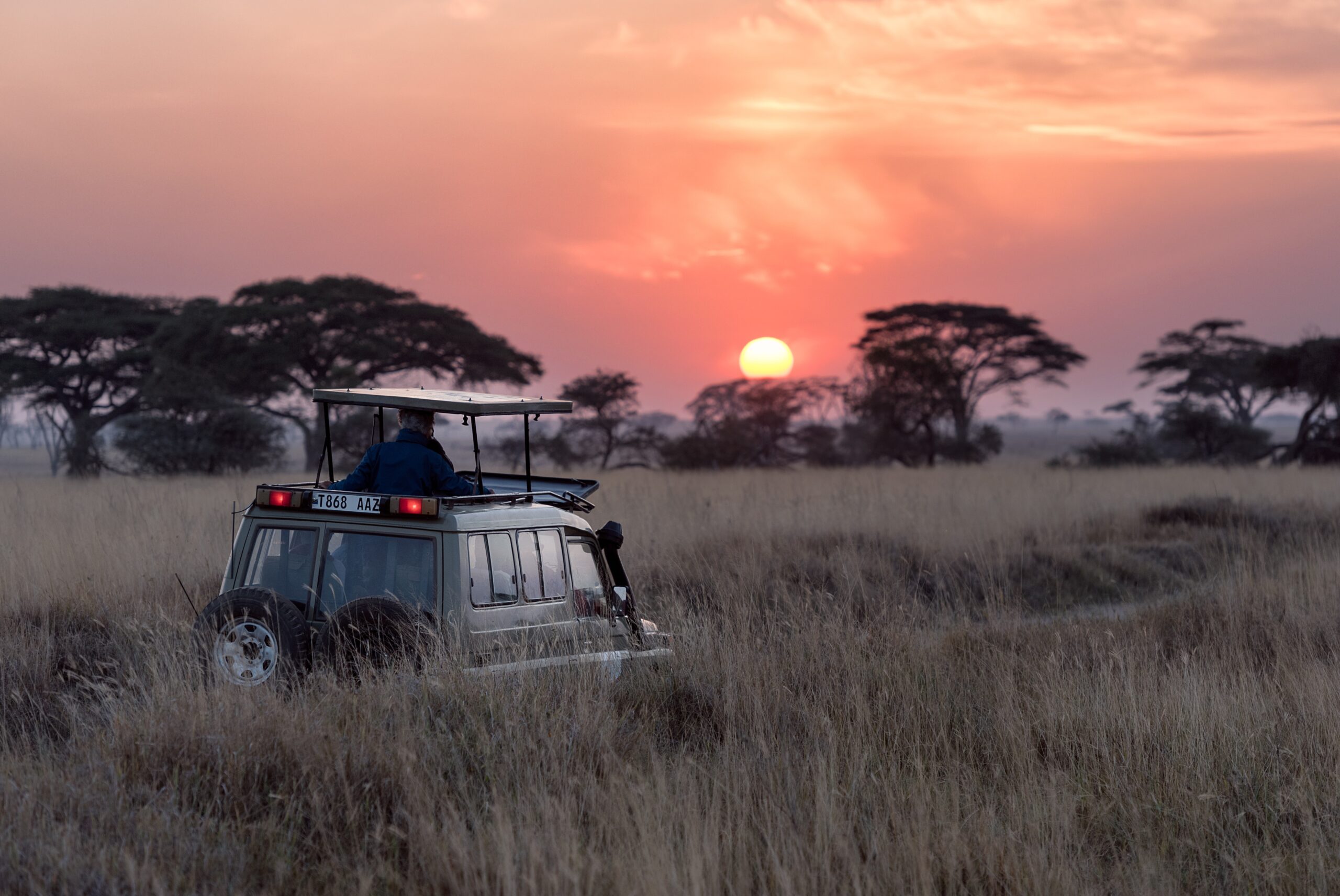After summitting Mt. Kilimanjaro, I honestly wasn’t sure if I would have anything left to enjoy a safari afterward, especially since our summit day lasted 20 hours due to a team member’s medical emergency during our descent. But after a good night’s sleep and a hot shower, we were all well recovered and ready to see and experience more of Tanzania’s beauty. International Mountain Guides (IMG) organized the safari and as with their climbing expeditions, this excursion did not disappoint.
After spending the night in Moshi, we were shuttled to a small airport in Arusha where we caught a flight to the Serengeti. From our small airplane, we spotted many animals along the way. Once we arrived in the Serengeti National Park, we met our safari guides and drivers and spent the rest of the day seeing a wide variety of animals: lions, zebras, giraffes, warthogs, hippos, and my favorite – cheetahs! That afternoon, we were brought to the stunning Serengeti Serena Lodge. After roughing it on Mt. Kilimanjaro for seven days, the luxury of this hotel was a welcomed change. The food was phenomenal and the rooms were beautiful cottages, that looked like hobbit houses from the outside.
Unlike the rain forests of Mt. Kilimanjaro, the Serengeti was hot, dry, and dusty during our visit in July. The roads were extremely bumpy, but we had excellent viewing from the pop-up roof in our Land Rovers. During our second day, we saw animals everywhere. One of the safari highlights was seeing a huge herd of elephants that sauntered in front of our vehicles apparently on their way to the next watering hole. Another memorable moment was to have a couple of lions approach our vehicles when we paused to take pictures of them. Apparently, they have seen “our kind” before and were happy to take a break from the heat beneath our vehicles. The lions stayed with us for about 20 minutes, until something caught their eye and they ran into the brush, most likely chasing their next meal. In addition to this, we saw more zebras, and hippos. We also spotted hyenas and herds of gazelles and antelopes, along with dik-diks and a wide variety of birds.
After the day’s activities, our guides brought us to a more remote and rustic lodging called the Ndutu Safari Lodge. We ended this most memorable day with a picturesque sunset. I had spent so much of my time preparing for the climb that I didn’t really give much thought to what the safari would be like. So, as we sipped gin and tonics and watched giraffes slowly amble past the acacia trees, I was beyond content.
The following morning, our guide took us to a Maasai Village. The Maasai are an indigenous semi-nomadic people that live mostly in Tanzania and Kenya. Because they live close to many of the game preserves and national parks, the Maasai are easily recognized by their colorful clothing and their very traditional way of life.
We were greeted at the village gate with traditional ceremonial dances performed separately by the men and women. We then toured their small village where they invited us to see their homes. Their homes are circular or loaf-shaped and are called Inkajijik. Because the Maasai are nomadic, their homes are semi-permanent and made from mud, sticks, dung, and grass. The women are responsible for making and caring for the homes, while the men are the protectors of their family and property and make the fences that help protect their cattle from wild animals. In addition to touring their village, we were able to visit their one-room schoolhouse and learned about how the Maasai hunt and build fires.
After the Maasai village, we visited the Oldupai Gorge and museum, which is famous for the work conducted by Louis and Mary Leaky and their evolutionary claims about how human beings began.
Our day concluded with a quick stop at an elephant graveyard which is a marshy area that elephants journey to when they grow older. The marsh provides the elephants with softer grass that easier to digest. It is called a graveyard because this is where many older elephants die. After our busy third day on safari, our guides brought us to the exceptional accommodations of Ngorongoro Serena Lodge, where we had spectacular views of Ngorongoro crater.
The lodge was built along the rim of the Ngorongoro crater which is an extinct volcanic caldera. The area of the crater is about 102 square miles and is approximately 12 miles across. The rim itself has lush forests, with grassy fields on the floor of the crater. Ngorongoro is home to thousands of animals and is a wonderful place to see Africa’s famous big five: the lion, the rhinoceros, the cape buffalo, the elephant, and the leopard. We saw all of them except the cape buffalo. Our favorites were definitely the wildebeests! They are so unusual looking. I can’t imagine seeing thousands of them during their annual migration across the Serengeti. The following morning our group enjoyed more of the Ngorongoro crater and then journeyed back to the airport to make our way home.
When I recount my adventures in Tanzania to others, I am often asked which was better: the safari or the mountain climb. I can never answer that question because they were two very exceptional experiences. So, instead of satisfying my listeners’ curiosity, I encourage them to go to Tanzania and see for themselves.
